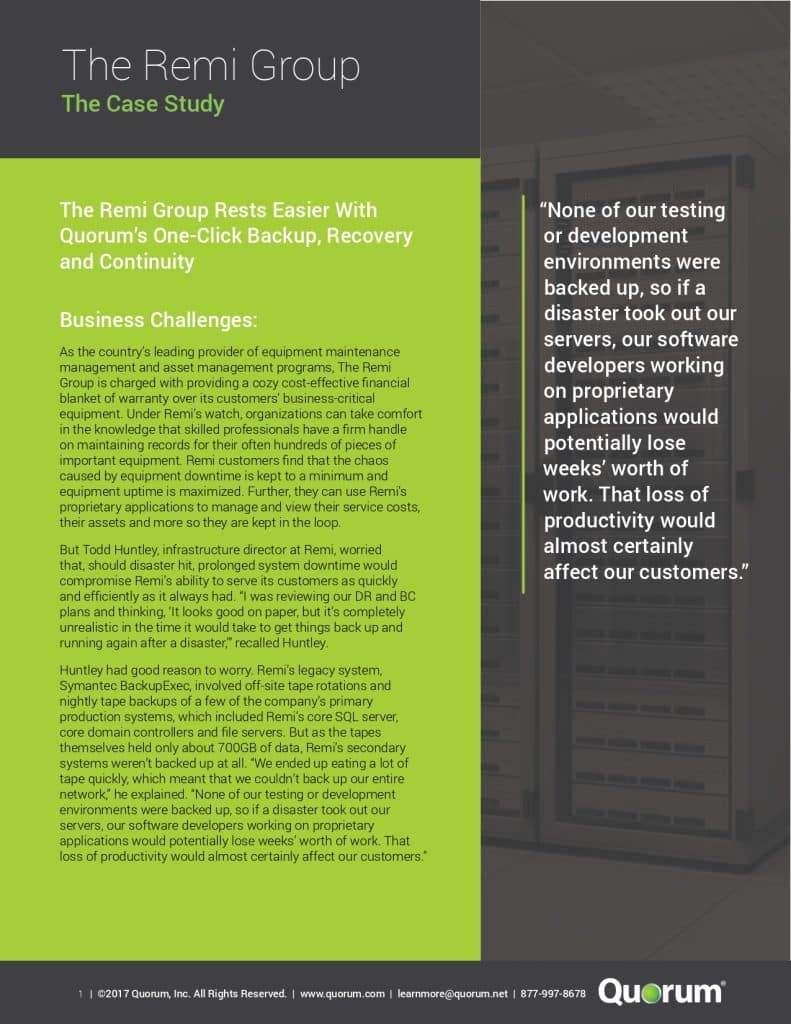
Business Challenges:
As the country’s leading provider of equipment maintenance management and asset management programs, The Remi Group is charged with providing a cozy cost-effective financial blanket of warranty over its customers’ business-critical equipment. Under Remi’s watch, organizations can take comfort in the knowledge that skilled professionals have a firm handle on maintaining records for their often hundreds of pieces of important equipment. Remi customers find that the chaos caused by equipment downtime is kept to a minimum and
equipment uptime is maximized. Further, they can use Remi’s proprietary applications to manage and view their service costs,
their assets and more so they are kept in the loop.
But Todd Huntley, infrastructure director at Remi, worried that, should disaster hit, prolonged system downtime would compromise Remi’s ability to serve its customers as quickly and efficiently as it always had. “I was reviewing our DR and BC plans and thinking, ‘It looks good on paper, but it’s completely unrealistic in the time it would take to get things back up and running again after a disaster,’” recalled Huntley.
Huntley had good reason to worry. Remi’s legacy system, Symantec BackupExec, involved off-site tape rotations and nightly tape backups of a few of the company’s primary production systems, which included Remi’s core SQL server, core domain controllers and file servers. But as the tapes themselves held only about 700GB of data, Remi’s secondary systems weren’t backed up at all. “We ended up eating a lot of tape quickly, which meant that we couldn’t back up our entire network,” he explained. “None of our testing or development environments were backed up, so if a disaster took out our servers, our software developers working on proprietary applications would potentially lose weeks’ worth of work. That loss of productivity would almost certainly affect our customers.” Testing was also an issue. “The best it could do was file restores, but it was all tape backup, so it was kind of lengthy,” said Huntley. “As far as a bare-metal restore, I’d have to do it to a device that was in use because we had no redundant systems to test it out.” Given these critical shortcomings, Huntley determined that they simply had to do better.

